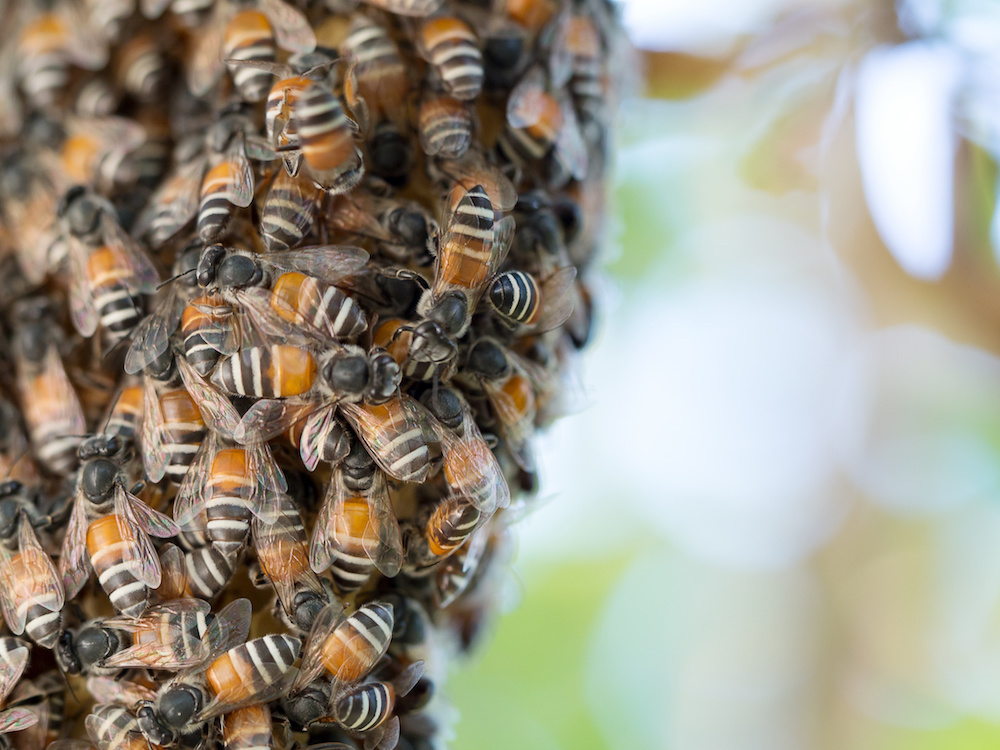3 Myths About Bees Debunked


How much do you know about bees? As prominent figures in our culture, we can find images of bees in children’s books, on cereal boxes and as mascots to sports teams. With bees being so prevalent, you’d think we’d all know everything there is to know about them. In reality, most of us don’t know as much as we think we do!
There are a lot of myths out there about bees and what they do and why. And that’s understandable – with more than 20,000 species of bees on the planet, there is so much variation among bee species. Many of the common misconceptions about bees persist because, when most of us think of bees, we are all thinking about the same bee – the honey bee.
Today we are going to take a look at three of the most common myths about bees and set the record straight. Here we go!
3 Common Myths About Bees
Myth 1: All bees make honey.
When most people think of bees, they think of honey. But, you might be surprised to learn that most bees don’t actually make honey. Honey is only produced by social species of bees that live in colonies. They make the honey to feed the brood and queen during the winter months.
Most bee species are solitary, meaning that they do not live in colonies or in hives with hundreds or thousands of other bees. They use nectar and pollen to make the food they need to keep their young alive.
And here’s another interesting fact: there are some species of wasps that also make honey!
Myth 2: Bees don’t sting at night.
Many people believe that bees can’t see at night or that they simply aren’t able to sting in the dark. Although we might hope this is true, the fact is that honey bees are perfectly capable of stinging you at night. The reason many people believe this myth is because bee stings at night are relatively rare.
In the evening, honey bees typically retire to their nests. They stop gathering pollen and nectar and rest in preparation for the next day’s work. The cooler temperatures keep the bees in the hive or clustered around it until the next day. With the bees tucked away in their home, they are far less likely to sting humans at night. However, if you decide to bother the nest, they will not hesitate to sting, so be careful!
Myth 3: Bees are dangerous.
There are a lot of people out there who are seriously afraid of bees. The sight of a hive or swarm is enough to send them into a panic. The reality is that most bees are completely harmless when left alone. And unless you are allergic to bee venom, a bee sting is just a painful and temporary nuisance. In fact, some research suggests that most adults can sustain more than 1,000 bee stings without any serious, long-term consequences.
Even though bees are generally quite docile, it’s still smart to let the professionals handle any beehives or swarms on your property. When bees sense that their hive and queen may be threatened, they will not hesitate to attack. Expert bee removal specialists will have the right skills and equipment to get the job done safely.
Facts About Honey Bees
We hope you learned a little more about these amazing creatures and we encourage you to share your new knowledge with others. It will be impossible to learn everything there is to know about bees and honey, but a little knowledge goes a long way in protecting and preserving bees.
Do you have a bee situation at your home or business? Give us a call! We love to help our customers learn more about bees and keep their properties and families safe from bee infestations. When you have a swarm or hive on your property, call D-Tek Live Bee Removal for professional live bee removal. We specialize in removing bees using natural processes and without the use of chemicals.
D-Tek Live Bee Removal: live bee removal, bee removal repairs and bee proofing services in San Diego County.
Is a beehive causing a problem on your property? Call the experts at D-Tek Live Bee Removal today.
